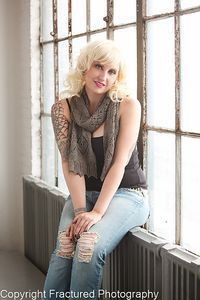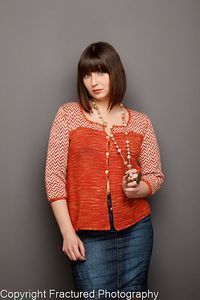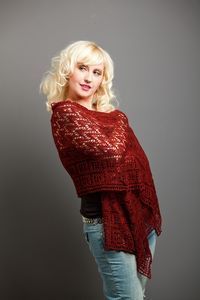The Swagger and Some Honesty About the Knit Designer/Publishing World
I was driving home just now and it occurred to me that if one has a swagger, that it'd take a lot more calories to walk a mile than if one did not have a swagger. I do not have a swagger.
On other thoughts: I've read with interest different comments from knitters who say they won't pay for knitting patterns. I'm not thinking that all knitters feel that way. But, some do. I wonder why that is. Some knitters will pay oodles of cash for yarn (like, upwards of 12 dollars a skein for a sweater's worth of yarn) but put the kabosh on a price tag of five dollars for a pattern that's not a drive-by freebie. You know, the full-on pattern with all the bells and whistles including professional editing and photography. I will totally admit; however, that single patterns can and do have a range of quality. But that doesn't mean that people should expect that patterns need to always be free. Or, that someone who comes up with the pattern should not be compensated.
Speaking from experience, designing a knit pattern, knitting samples, and having it edited isn't a free or quick process. Some patterns, even patterns for hats, have taken me more than a month to produce. And in some cases--especially since a knitwear designer cannot predict the potential popularity of a pattern--it can take months, if not forever, to recoup the costs of producing it professionally.
When my brother Marc was in high school, his goal, other than making good grades, was to never wear anything but shorts and flip flops the entire four years through rain, sunshine, cold, warm and earthquakes (we didn't have sleet or snow). That was his goal and he achieved that goal. He even wore shorts and flip flops under his graduation gown. And when I see someone proudly announce: "I've never ever paid for a knitting pattern and I don't intend to!" I think of him.
So anyway, and in all seriousness, I have to hand it to Shannon Okey (Knitgrrl), the founder of Cooperative Press. Her goal is to find a way to ensure that all the individuals involved in producing a fiber publication will be able to share profits more equally than what we see in the "usual" business models when it comes to knitwear designers. When knitwear designers create a pattern for a magazine, what typically happens is that they get a design approved, they knit a sample from yarn sent to them and provide a pattern in a super-fast time frame . . . then the publication takes it from there. The publishing house edits it, they photograph it and then when they publish the magazine, several months later, they will pay the designer a fee. Sometimes the designer has the opportunity to make royalties on online single-pattern sales which get paid out twice a year. With books, it is similar, but not always the same. In some cases, especially when a book is an edited group of patterns contributed by several designers, the designer can expect to receive a very small one-time fee (way less than a non-luxury car payment) and absolutely no royalties at all. The editor of that book? I have no idea.
Yes, I have contributed to books and received either nothing or maybe a hundred or two hundred bucks for my contribution. It was my choice and I did it, but this is what people like me face, which is fine. We live in a world where we have choices. I'm not going to--and never will--complain because I also have it good. I am backed by a great publisher and have worked with a handful of wonderful organizations, too.
So, when I see a business model like Cooperative Press, I get excited. Cooperative Press differs from a standard publisher in that they pay four-to-five-times higher royalties, embrace digital as well as print and offer
authors a greater degree of creative control than what they'd normally receive. The thing is, unlike a large publisher, they don't have the money or the publicity power that a bigger house has. So that's why I'm spreading the word.
I have copies of several of their publications, namely their recently published ones in the Fresh Design series which features books on shawls, men, scarves and sweaters. They are available as e-books as well as print. These are not super-slick coffee table books, but that is not what they are meant to be. They are edgy and reflect the aesthetic of many everyday knitters.
Here are my favorites from each of the books:
Fresh Designs Scarves: Diamond Sampler by Sylvia Cannizzaro (It's Sanguine Gryphon yarn!)
Fresh Designs Shawls: Sea of Tulips Stole by Anna Dalvi
Fresh Designs Men: Gone Fishin' Sweater by Karen Bourquin (no wonder I love it; it's hemp!)
Fresh Designs Sweaters: Ziggy by Pamela Wynne
Wendy Bernard's Blog
- Wendy Bernard's profile
- 15 followers





